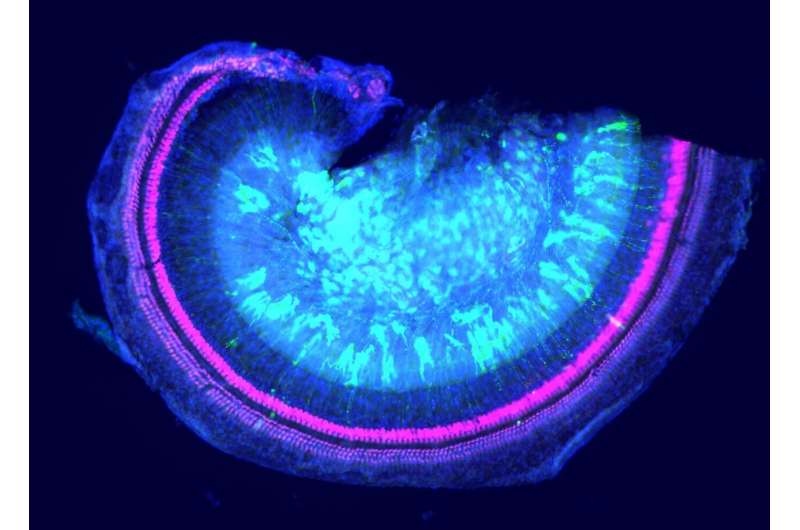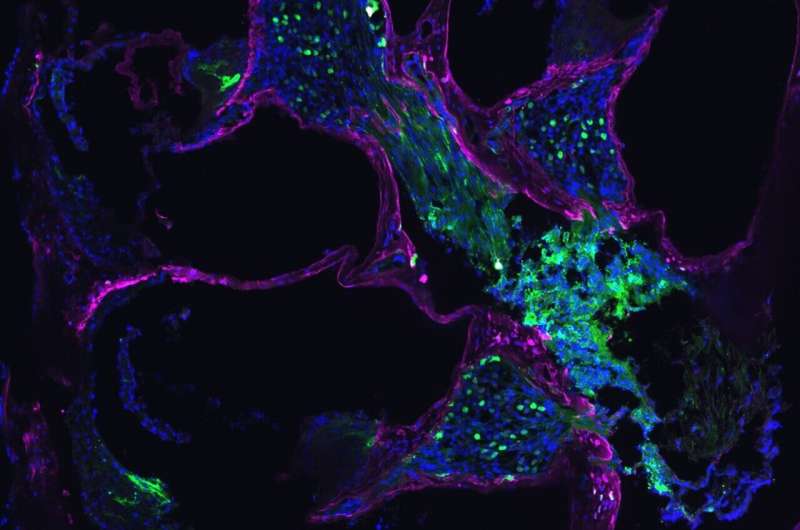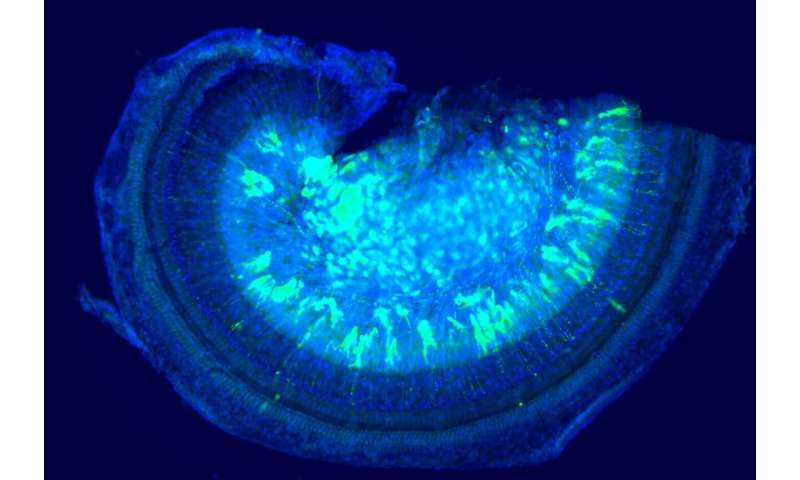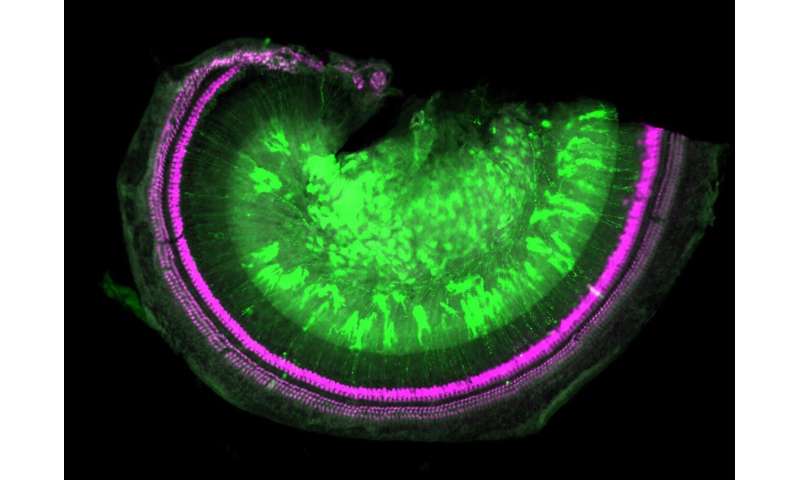This article has been reviewed according to Science X's editorial process and policies. Editors have highlighted the following attributes while ensuring the content's credibility:
fact-checked
peer-reviewed publication
trusted source
proofread
Novel gene therapy significantly reduces hearing loss linked to rare disease in mouse model

An international team led by researchers at UCL and the NIHR Great Ormond Street Hospital Biomedical Research Centre have developed in mice a gene therapy that significantly reduces the hearing loss associated with Norrie disease.
Norrie disease is a rare but devastating genetic disorder that causes blindness and hearing loss, and it primarily affects boys. They are born blind and from about 12 years of age develop progressive hearing loss. This research is aimed at slowing or preventing the hearing loss and thus the dual sensory deprivation that severely restricts the lives of those with Norrie disease.
Currently, the only possible treatment option is cochlear implants, which are only partly effective in Norrie disease. This research in mice, published in EMBO Molecular Medicine, has shown how a gene therapy can be used to prevent the death of the vitally important hair cells in the cochlea—the snail shell-like part of the inner ear responsible for sensing sound—and stop the loss of hearing associated with Norrie disease.
The team injected a gene therapy designed to restore the missing norrin protein. They showed that the abnormal blood vessels in the ears and eyes that develop in mice with Norrie disease are improved by the treatment. This could help prevent deafblindness as tests showed both better hearing and vision after the gene therapy treatment in mice.

Dr. James Wawrzynski from UCL Great Ormond Street Institute of Child Health, co-author on the study, explains, "Children with Norrie disease progressively lose their hearing because of a faulty gene called NDP, which is responsible for some of the structures in the inner ear."
"In our study we have shown that in mice with Norrie disease, we can correct this faulty gene by inserting billions of new 'fixed' copies into the bloodstream. This gene therapy appears to lead to better blood vessel structure in the inner ear and crucially we can see the sensory hairs are protected."
Being able to offer effective treatment could be life-changing for children who are seen at hospitals around the world, including at GOSH. Being blind can be challenging but treating or slowing the progression of hearing loss could mean the difference between independence as an adult, or not.
Professor Jane Sowden, Professor of Developmental Biology & Genetics at UCL Great Ormond Street Institute of Child Health and co-theme lead of tissue engineering and regenerative medicine at the NIHR GOSH BRC, who led the research, said, "I hope that gene therapy for hearing loss caused by faulty genes will soon be available for patients. In this study we were able to reduce the progressive hearing loss in a Norrie disease model by gene therapy for the first time."
"The treatment in mice was successful not only for newborns but also when we treated at a stage comparable to children and young people. This is exciting progress as it lays the groundwork for future application in patients—this could be transformative for them and their families and caregivers."
-

Images show part of the uncoiled mouse cochlea, after treatment with the gene therapy (green). In pink, the all important sensory hair cells can be seen, preserving hearing in mice with Norrie disease. Credit: Professor Jane Sowden et al -

Images show part of the uncoiled mouse cochlea, after treatment with the gene therapy (green). In pink, the all important sensory hair cells can be seen, preserving hearing in mice with Norrie disease. Credit: Professor jane Sowden et al
Dr. Valda Pauzuolyte, first author of this new paper who completed the research at UCL Great Ormond Street Institute of Child Health, said, "We have previously shown that Norrie hearing loss coincides with loss of the sensory hair cells in the inner ear. While there may also be other factors involved, once lost, cochlear hair cells cannot regrow. This new work shows that NDP gene therapy can be very effective in preventing further damage to the hair cells and hearing in Norrie disease in mice."
"Hearing is one of the most important senses. While sight loss is already established at birth for those with Norrie disease, this work shows how we might be able to help them keep their hearing—an incredibly important sense."
More information: Valda Pauzuolyte et al, Systemic gene therapy rescues retinal dysfunction and hearing loss in a model of Norrie disease, EMBO Molecular Medicine (2023). DOI: 10.15252/emmm.202317393


















